#NGC 3324
Explore tagged Tumblr posts
Text

Cosmic Cliffs
119 notes
·
View notes
Photo

Cosmic Cliffs in the Carina Nebula
Infrared composite image of the Cosmic Cliffs created using two different cameras from the James Webb Space Telescope, NIRCam and MIRI. This combined image reveals hundreds of previously hidden stars and numerous galaxies.
Full Resolution PNG Image
Full Resolution TIF Image
#space#carina nebula#cosmic cliffs#james webb space telescope#jwst#nasa#ngc 3324#nebula#star forming region
111 notes
·
View notes
Text
(source)
2024 April 19
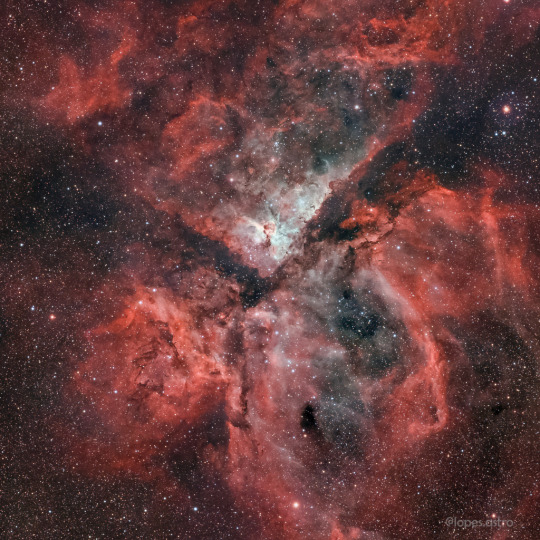
See Explanation. Clicking on the picture will download
the highest resolution version available.
The Great Carina Nebula
Image Credit & Copyright: Demison Lopes
Explanation: A jewel of the southern sky, the Great Carina Nebula is more modestly known as NGC 3372. One of our Galaxy's largest star forming regions, it spans over 300 light-years. Like the smaller, more northerly Great Orion Nebula, the Carina Nebula is easily visible to the unaided eye. But at a distance of 7,500 light-years it lies some 5 times farther away. This stunning telescopic view reveals remarkable details of the region's glowing filaments of interstellar gas and obscuring cosmic dust clouds. The Carina Nebula is home to young, extremely massive stars, including the still enigmatic variable Eta Carinae, a star with well over 100 times the mass of the Sun. Eta Carinae is the bright star above the central dark notch in this field and left of the dusty Keyhole Nebula (NGC 3324).
#reblog#astrophotography#ngc 3372#carina nebula#ngc 3324#keyhole nebula#emission nebula#star-forming region#η carinae#carina#apod
44 notes
·
View notes
Link

An article published in the journal "Monthly Notices of the Royal Astronomical Society" reports a study of the open cluster NGC 3324, part of the Carina Nebula, one of the largest known star nurseries. A team of researchers used observations conducted with the James Webb Space Telescope to specifically study an area on the edge of NGC 3324 nicknamed the Cosmic Cliffs. The nickname is due to the jagged appearance like a cliff but instead of water and rocks, there's an expanse of gas and dust. The amplitude of the infrared frequencies detected by Webb made it possible to obtain more details than ever of what is happening in the midst of those cosmic clouds, finding 24 new outflows of molecular hydrogen associated with as many protostars.
0 notes
Text
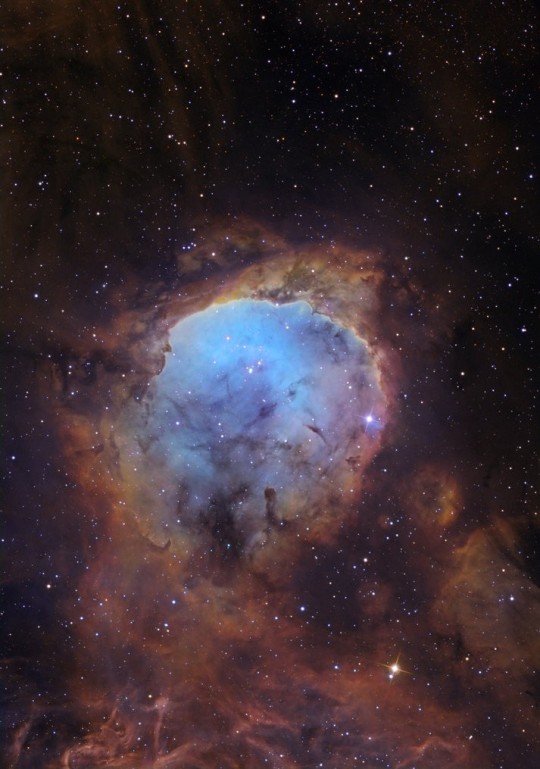
NGC 3324, Magic Mirror
2K notes
·
View notes
Text
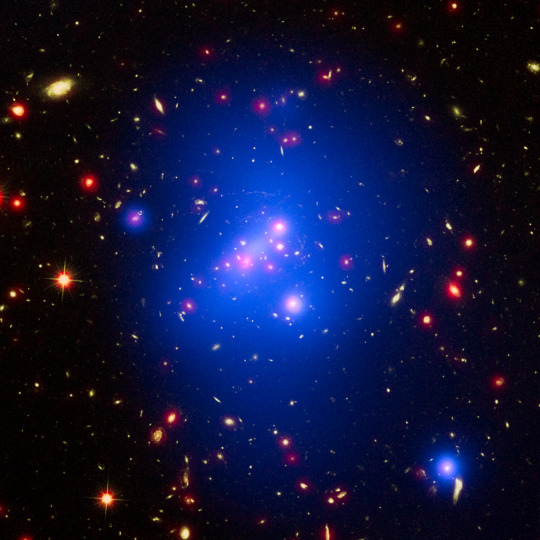
Astronomers used three of NASA's Great Observatories to capture this multiwavelength image showing galaxy cluster IDCS J1426.5+3508. It includes X-rays recorded by the Chandra X-ray Observatory in blue, visible light observed by the Hubble Space Telescope in green, and infrared light from the Spitzer Space Telescope in red. This rare galaxy cluster has important implications for understanding how these megastructures formed and evolved early in the universe.
How Astronomers Time Travel
Let’s add another item to your travel bucket list: the early universe! You don’t need the type of time machine you see in sci-fi movies, and you don’t have to worry about getting trapped in the past. You don’t even need to leave the comfort of your home! All you need is a powerful space-based telescope.
But let’s start small and work our way up to the farthest reaches of space. We’ll explain how it all works along the way.
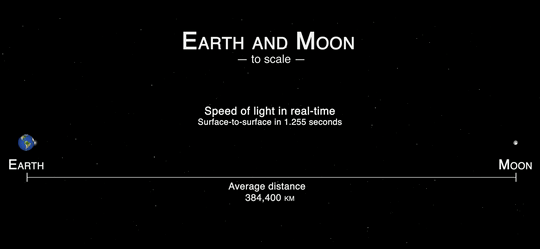
This animation illustrates how fast light travels between Earth and the Moon. The farther light has to travel, the more noticeable its speed limit becomes.
The speed of light is superfast, but it isn’t infinite. It travels at about 186,000 miles (300 million meters) per second. That means that it takes time for the light from any object to reach our eyes. The farther it is, the more time it takes.
You can see nearby things basically in real time because the light travel time isn’t long enough to make a difference. Even if an object is 100 miles (161 kilometers) away, it takes just 0.0005 seconds for light to travel that far. But on astronomical scales, the effects become noticeable.
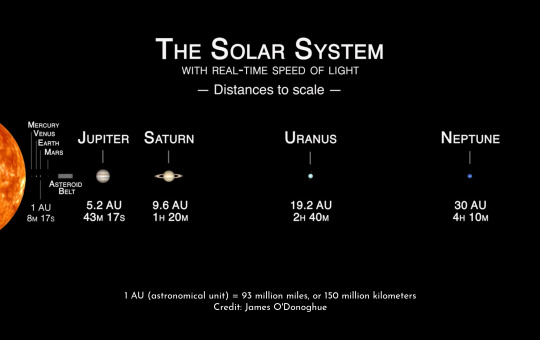
This infographic shows how long it takes light to travel to different planets in our solar system.
Within our solar system, light’s speed limit means it can take a while to communicate back and forth between spacecraft and ground stations on Earth. We see the Moon, Sun, and planets as they were slightly in the past, but it's not usually far enough back to be scientifically interesting.
As we peer farther out into our galaxy, we use light-years to talk about distances. Smaller units like miles or kilometers would be too overwhelming and we’d lose a sense of their meaning. One light-year – the distance light travels in a year – is nearly 6 trillion miles (9.5 trillion kilometers). And that’s just a tiny baby step into the cosmos.
youtube
The Sun’s closest neighboring star, Proxima Centauri, is 4.2 light-years away. That means we see it as it was about four years ago. Betelgeuse, a more distant (and more volatile) stellar neighbor, is around 700 light-years away. Because of light’s lag time, astronomers don’t know for sure whether this supergiant star is still there! It may have already blasted itself apart in a supernova explosion – but it probably has another 10,000 years or more to go.
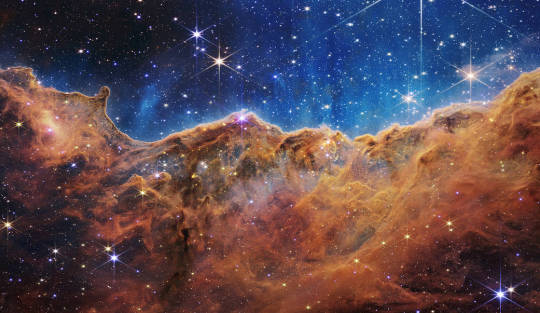
What looks much like craggy mountains on a moonlit evening is actually the edge of a nearby, young, star-forming region NGC 3324 in the Carina Nebula. Captured in infrared light by the Near-Infrared Camera (NIRCam) on NASA’s James Webb Space Telescope, this image reveals previously obscured areas of star birth.
The Carina Nebula clocks in at 7,500 light-years away, which means the light we receive from it today began its journey about 3,000 years before the pyramids of Giza in Egypt were built! Many new stars there have undoubtedly been born by now, but their light may not reach Earth for thousands of years.
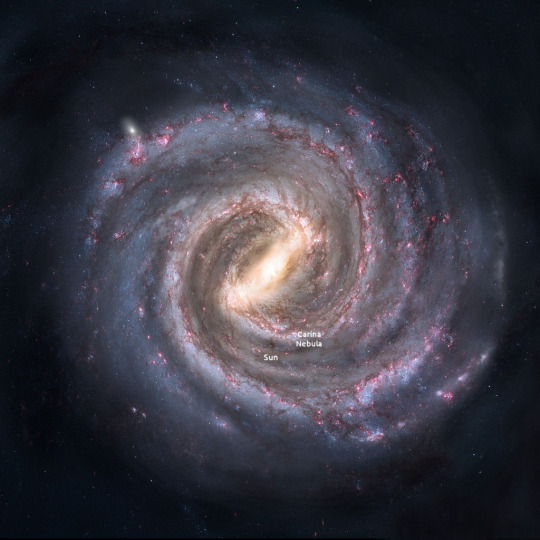
An artist’s concept of our Milky Way galaxy, with rough locations for the Sun and Carina nebula marked.
If we zoom way out, you can see that 7,500 light-years away is still pretty much within our neighborhood. Let’s look further back in time…
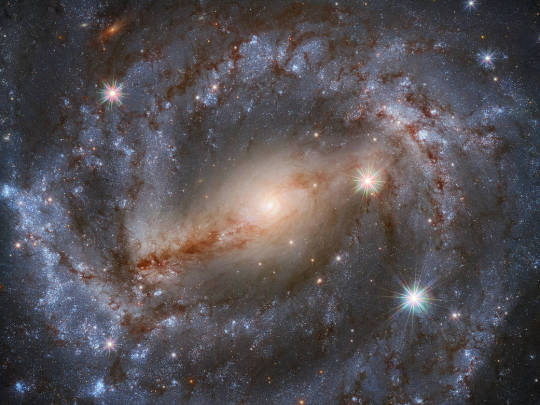
This stunning image by the NASA/ESA Hubble Space Telescope features the spiral galaxy NGC 5643. Looking this good isn’t easy; 30 different exposures, for a total of nine hours of observation time, together with Hubble’s high resolution and clarity, were needed to produce an image of such exquisite detail and beauty.
Peering outside our Milky Way galaxy transports us much further into the past. The Andromeda galaxy, our nearest large galactic neighbor, is about 2.5 million light-years away. And that’s still pretty close, as far as the universe goes. The image above shows the spiral galaxy NGC 5643, which is about 60 million light-years away! That means we see it as it was about 60 million years ago.
As telescopes look deeper into the universe, they capture snapshots in time from different cosmic eras. Astronomers can stitch those snapshots together to unravel things like galaxy evolution. The closest ones are more mature; we see them nearly as they truly are in the present day because their light doesn’t have to travel as far to reach us. We can’t rewind those galaxies (or our own), but we can get clues about how they likely developed. Looking at galaxies that are farther and farther away means seeing these star cities in ever earlier stages of development.
youtube
The farthest galaxies we can see are both old and young. They’re billions of years old now, and the light we receive from them is ancient since it took so long to traverse the cosmos. But since their light was emitted when the galaxies were young, it gives us a view of their infancy.

This animation is an artist’s concept of the big bang, with representations of the early universe and its expansion.
Comparing how fast objects at different distances are moving away opened up the biggest mystery in modern astronomy: cosmic acceleration. The universe was already expanding as a result of the big bang, but astronomers expected it to slow down over time. Instead, it’s speeding up!
The universe’s expansion makes it tricky to talk about the distances of the farthest objects. We often use lookback time, which is the amount of time it took for an object’s light to reach us. That’s simpler than using a literal distance, because an object that was 10 billion light-years away when it emitted the light we received from it would actually be more than 16 billion light-years away right now, due to the expansion of space. We can even see objects that are presently over 30 billion light-years from Earth, even though the universe is only about 14 billion years old.

This James Webb Space Telescope image shines with the light from galaxies that are more than 13.4 billion years old, dating back to less than 400 million years after the big bang.
Our James Webb Space Telescope has helped us time travel back more than 13.4 billion years, to when the universe was less than 400 million years old. When our Nancy Grace Roman Space Telescope launches in a few years, astronomers will pair its vast view of space with Webb’s zooming capabilities to study the early universe in better ways than ever before. And don’t worry – these telescopes will make plenty of pit stops along the way at other exciting cosmic destinations across space and time.
Learn more about the exciting science Roman will investigate on X and Facebook.
Make sure to follow us on Tumblr for your regular dose of space!
#NASA#astronomy#telescope#Roman Space Telescope#dark energy#galaxies#cosmology#astrophysics#stars#galaxy#Hubble#Webb#Chandra#Spitzer#space images#Youtube
3K notes
·
View notes
Text
[source]

The Keyhole Nebula Near Eta Carinae - April 4th, 1996.
"The dark dusty Keyhole Nebula gets its name from its unusual shape. Designated NGC 3324, the Keyhole Nebula is a smaller region superposed on the bright Eta Carina Nebula. The Eta Carina Nebula is the largest nebula in angular extent on the sky, larger than the famous Orion Nebula, but its southerly location makes it less familiar to northern hemisphere skywatchers. The star Eta Carinae itself is extremely variable and has faded in a mere 150 years - formerly one of the brightest in the sky, it is now invisible without a telescope. The nebula created by the star's 19th century outburst has been photographed by the Hubble Space Telescope."
#reblog#apod#astronomy#ngc 3324#keyhole nebula#ngc 3372#carina nebula#emission nebula#star-forming region#η carinae#hypergiant#carina
27 notes
·
View notes
Text

NGC 3324 for Chandra's 25th Anniversary (Chandra/Webb composite) by NASA's James Webb Space Telescope
381 notes
·
View notes
Text
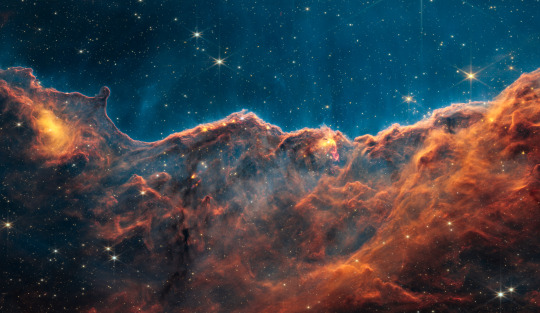
Image of the Cosmic Cliffs, a region at the edge of a gigantic, gaseous cavity within NGC 3324, captured by Webb’s Near-Infrared Camera (NIRCam).
Image: NASA
1K notes
·
View notes
Text
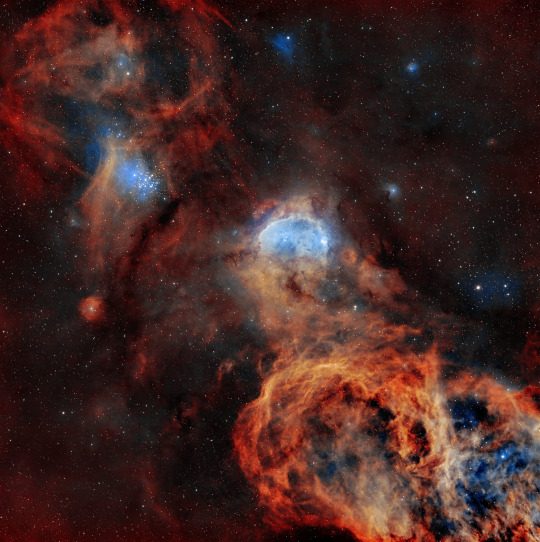
The Gabriela Mistral Nebula (NGC 3324, center) and NGC 3293 (upper left) // Frank Arapovic
#astronomy#astrophotography#nebula#emission nebula#star-forming region#gabriela mistral nebula#gabriela mistral#NGC 3324#IC 2599#stars#star cluster#open cluster#NGC 3293#carina
86 notes
·
View notes
Photo

2024 April 19
The Great Carina Nebula Image Credit & Copyright: Demison Lopes
Explanation: A jewel of the southern sky, the Great Carina Nebula is more modestly known as NGC 3372. One of our Galaxy's largest star forming regions, it spans over 300 light-years. Like the smaller, more northerly Great Orion Nebula, the Carina Nebula is easily visible to the unaided eye. But at a distance of 7,500 light-years it lies some 5 times farther away. This stunning telescopic view reveals remarkable details of the region's glowing filaments of interstellar gas and obscuring cosmic dust clouds. The Carina Nebula is home to young, extremely massive stars, including the still enigmatic variable Eta Carinae, a star with well over 100 times the mass of the Sun. Eta Carinae is the bright star above the central dark notch in this field and left of the dusty Keyhole Nebula (NGC 3324).
∞ Source: apod.nasa.gov/apod/ap240419.html
109 notes
·
View notes
Text
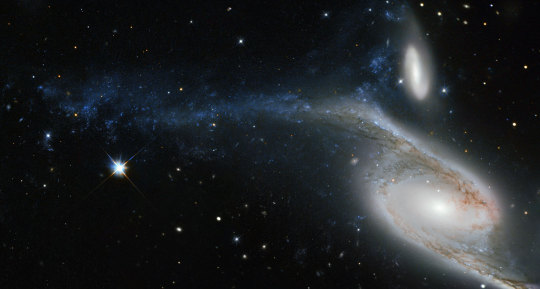
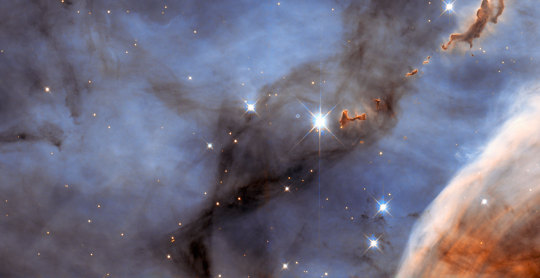



NGC 3324, Cosmic Cliffs
Carina Nebula, Mystic Mountains
NGC 6872 & IC 4976
M31, Andromeda Galaxy
IC 10
#stars#space#celestial#cosmic#cosmos#nebula#galaxies#cosmic cliffs#astral#andromeda#beautiful#beauty#escape#pretty#astrophotography#deep space#galactic#starburst galaxy#space dust#photography#carina nebula#ngc 3324#ngc 6872#ic 4976#ic 10#outer space#gorgeous#mesmerizing#nature#the unknown
578 notes
·
View notes
Photo

The Great Nebula in Carina : In one of the brightest parts of Milky Way lies a nebula where some of the oddest things occur. NGC 3372, known as the Great Nebula in Carina, is home to massive stars and changing nebulas. The Keyhole Nebula (NGC 3324), the bright structure just below the image center, houses several of these massive stars. The entire Carina Nebula, captured here, spans over 300 light years and lies about 7,500 light-years away in the constellation of Carina. Eta Carinae, the most energetic star in the nebula, was one of the brightest stars in the sky in the 1830s, but then faded dramatically. While Eta Carinae itself maybe on the verge of a supernova explosion, X-ray images indicate that much of the Great Nebula in Carina has been a veritable supernova factory. via NASA
637 notes
·
View notes
Text
More old pics, this one is the Carina Nebula, the most obvious naked-eye nebula in the southern night sky. 12 hours exposure time I think

The field of view of this image is about 4x3 degrees (the moon is 0.5 degrees across), so the nebula is quite large, about the size of your last finger segment viewed from an arms length away. Too big to fit it all in the frame of my telescope. Only the bright purple areas in the centre are visible to the naked eye though, making it appear smaller than it is unless you're in perfectly dark skies


The bright orange star in the middle is Eta Carinae, which underwent an explosion 182 years ago. Apparently the cause of the explosion is still unknown. It produced a super bright shell of gas which is now called the Homunculus nebula. It's far, far brighter than the Carina nebula around it, easily visible through a telescope, and bright enough for it to be visible in a 30fps video recording. Here's a pic of it I took at 2400mm:

The circular nebula towards the middle-bottom of the first image is NGC 3324, the subject of JWST's "cosmic cliffs" photo:


A 300mm lens cant really compete with a huge space telescope lol but you can still see where it is
123 notes
·
View notes
Text
Unseen Universe
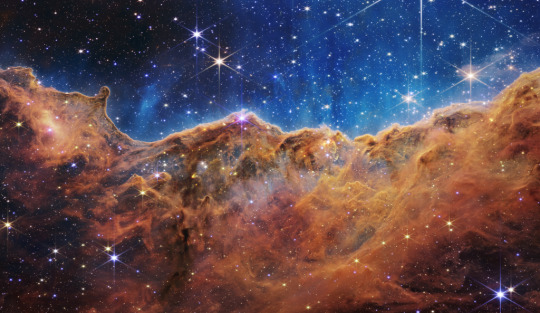
NASA reveals dazzling photographs taken by the JWST of parts of space never seen before. This is the edge of a young star-forming region called NGC 3324 in the Carina Nebula. (Click for better quality :3 )
46 notes
·
View notes
Link
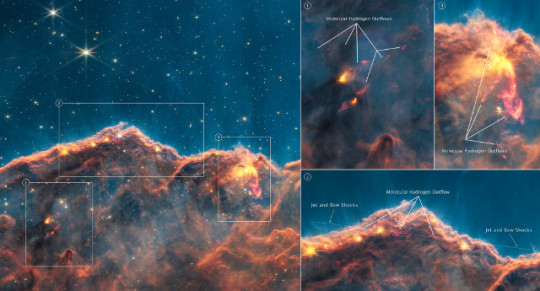
Un articolo pubblicato sulla rivista "Monthly Notices of the Royal Astronomical Society" riporta uno studio dell'ammasso aperto NGC 3324, parte della Nebulosa della Carena, una delle più grandi culle di stelle conosciute. Un team di ricercatori ha utilizzato osservazioni condotte con il telescopio spaziale James Webb per studiare in particolare un'area ai margini di NGC 3324 soprannominata Scogliere Cosmiche. Il soprannome è dovuto all'aspetto frastagliato come una scogliera ma invece di acqua e rocce c'è una distesa di gas e polveri. L'ampiezza delle frequenze infrarosse rilevate da Webb ha permesso di ottenere più che mai dettagli di ciò che avviene in mezzo a quelle nubi cosmiche trovando 24 nuovi deflussi di idrogeno molecolare associato ad altrettante protostelle.
#astronomia#stelle#protostelle#NGC 3324#Nebulosa della Carena#Scogliere Cosmiche#telescopio spaziale James Webb
0 notes